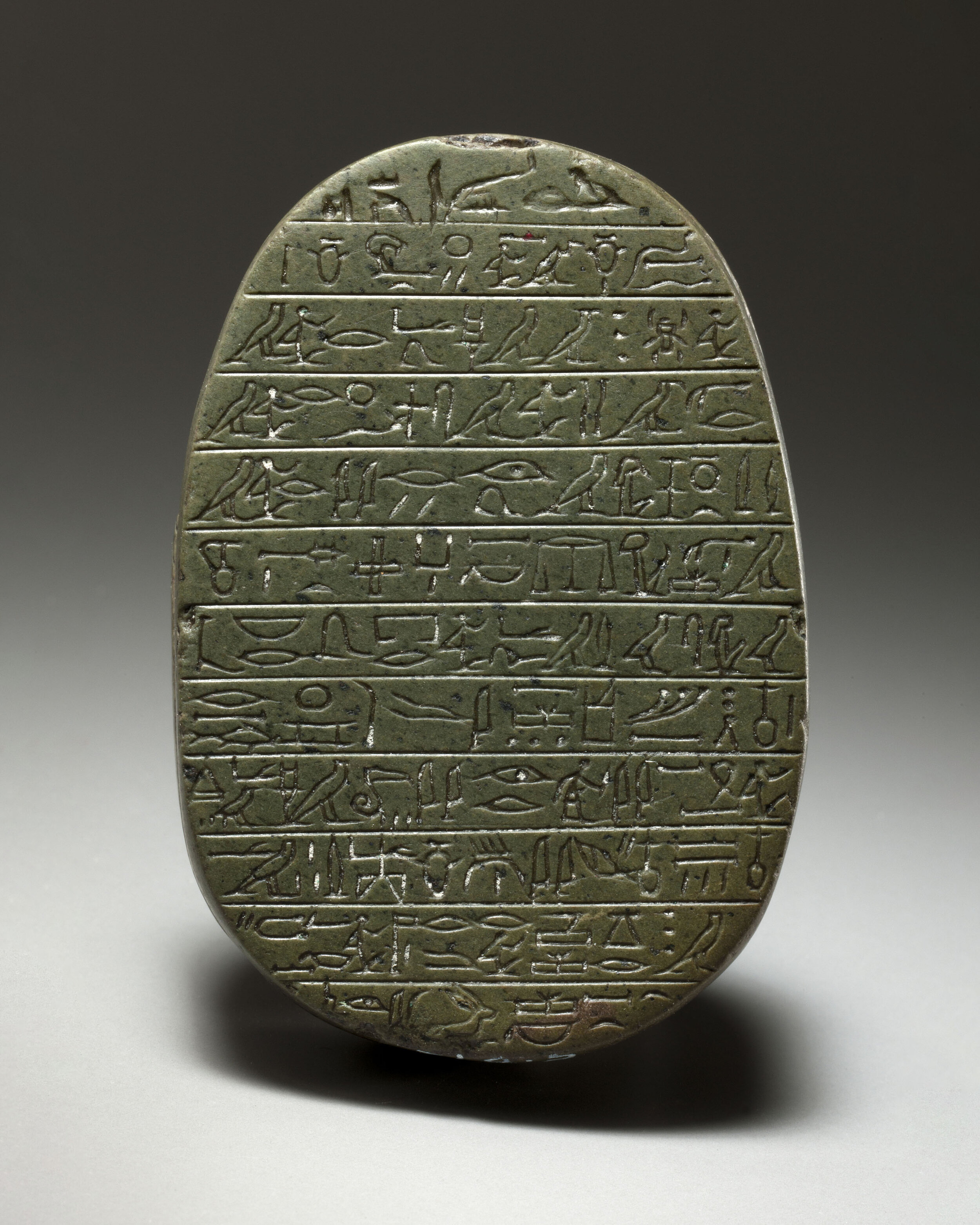Ancient Egyptian Wood Sarcophagus Mask






Ancient Egyptian Wood Sarcophagus Mask
Egyptian, New Kingdom, ca. 1550-1070 B.C.
Wood, plaster, gold, black and white pigments
H: 18.0 cm (7.0 in)
Serial: 19499
Provenance: Ex- Barbier Mueller collection, acquired in 1967
This mask, which was part of an anthropoid sarcophagus, was made of wood, covered with stucco and gilded; then the eyebrows and eyes were painted in black and white colors. The outlines of large, almond-shaped eyes and the sinuous lines of the eyebrows (according to Egyptian iconographical tradition, the thick lines are extended beyond the natural shape of the eye) are in light relief: in reality, Egyptians used kohl, a black substance that protected their eyes from the sun and the very dry desert climate. In each eye, the iris and the pupil still retain traces of polychromy (black). The outline of the nose is clearly indicated, the lips are thin. The serene facial expression is characteristic for the Egyptian mummiform coffins.
Wooden sculptures have a long tradition in Egyptian art, since the first wooden statuettes date back to the early Historical period. Typically, the sculptures were assembled from parts carved separately (the back of this mask retains a peg). Native species included acacia, sycamore fig and tamarisk, while cedar was imported from Lebanon. The variety of wooden objects is, however, not limited to figural arts, since there are also household or working tools, toiletry items, music instruments, furniture, flagpoles, boats. Though wood is a perishable material, its use provided significant advantages: lighter and easier to work with, it also allowed the composition of statues made from several elements, which were then assembled, stuccoed and painted. The carpenters of the New Kingdom period had a wide range of tools helping to work wood: axes, adzes, saws, bow-drills, mortise, firmer chisels, mallets, and awls.







